Grass Biology
Grasses are the family Poaceae (poe-ACE-ee-ee), also known as the Gramineae (gram-IN-ee-ee), with over 12,000 species worldwide. Florida has over 400 species; Martin and Palm Beach Counties have close to 200. Many plants with a "grassy look" are not grasses and many plants with "grass" in their names are not grasses either. Most often grasses are confused with sedges, members of Cyperaceae (sigh-per-ACE-ee-ee). Sedges are also abundant in our area (nearly 100 species) and differ from grasses by:
1. Having triangular stems with leaves in three rows (as seen end-on). Grasses generally have round stems, the leaves in two rows.
2. Having solid stems. Grasses usually have hollow stems.
3. Having leaves confined to the base and/or top of the plant. Grasses normally have leaves scattered along the stem.
4. Having different flowering structures.
Important Grass Characteristics
Basal Meristems
Basal meristems, also called intercalary (in-TER-kah-larry) meristems are at the base of the plant. Unlike most plants which grow by adding to the tips of branches, grasses grow by elongating at the base of the stem. Think of building a chimney by lifting it up and tucking bricks in at the base. The basal meristem gives grasses the ability to withstand grazing, burning, mowing, and severe abrasion. They just keep rising from below.
In addition to having basal meristems, many grasses spread and protect themselves with horizontal stems: rhizomes (underground) and stolons or runners (aboveground).

Specialized Flower Structure
Grasses have a specialized flowering structure. The nearly microscopic flowers are arranged into spikelets which are the basic unit for grass identification. They are the smallest readily visible part of the inflorescence (the entire flowering portion of the grass or of any plant). Often resembling a small bud, each spikelet has the same basic construction. It is a miniature branch with two tiny leaves called glumes at the base. The glumes are close to each other but not at exactly the same height, so you have a lower (first) glume and an upper (second) glume. A short stem called the rachilla extends above the glumes. One or several florets are attached to the rachilla. Each floret is an itsy bitsy flower and has two specialized bracts of its own called the lemma and the palea. The lemma resembles a microscopic canoe and is the outer of the two bracts, with the flower enclosed within it. The palea (seldom seen without dissection) is a lid on the lemma, and is usually hidden within it.

The flower inside the lemma has 1-3 (to rarely 6) anthers which are the pollen sacs. They are often yellow or purple and may dangle from the spikelet on threadlike filaments. They release pollen into the wind. There are also 2 or 3 stigmas which are the female pollen-receiving organs. In grasses the stigmas look like feathers, often purple, and also may be seen dangling from the spikelet in order to catch the wind-borne pollen. The stigmas lead to the ovary which, when pollinated, becomes the seed, also called the caryopsis.
At the base of the flower inside the lemma are the lodicules which are seldom seen without dedicated effort and a dissecting microscope. The lodicules are microscopic "balloons," often regarded as the "petals" of the flower. When the lodicules inflate, they pop open the palea and allow the anthers and stigmas to protrude and begin the pollination process.
The vast majority of grasses are pollinated by wind. On a breezy day in a grassy place you can usually find anthers and stigmas hanging over the edges of lemmas. Wind-pollinated plants sometimes have unisexual flowers, either separate male and female flowers on the same plant (monoecious plants) or males and females on separate plants (dioecious plants). Grasses can be monoecious or dioecious but this is not common.
Remember that all of these parts are tiny. The entire spikelet can be the size of a pinhead. You need at least a 10X hand lens or a dissecting microscope to see the parts clearly. For identification, the important parts are the glumes and lemmas. For most grasses you will find the two glumes to be the two lowest scales on the spikelet. The lemmas are the little scales farther out the spikelet. Practice will build confidence in identifying these parts.
Insect Pollination
Occasionally a grass may turn out to be pollinated, not by wind, but by insects. Now we're speculating wildly, but it looks like this might be the case with the common Blue Maidencane (Amphicarpum muhlenbergianum). This grass tends to grow as isolated patches in low wet woods which is not a great place to depend on wind for pollination. Further, each clump is probably genetically identical. So to exchange pollen with other clumps, a long-distance insect may be the key and the spikelets look like they might be adapted for this. The anthers are bright yellow and held out on long filaments. The stigmas are purple and displayed conspicuously. Interestingly, this species also makes underground "cleistogamous" spikelets which are able to form fruits without pollination. Again, this may be a reflection of unreliable pollination.
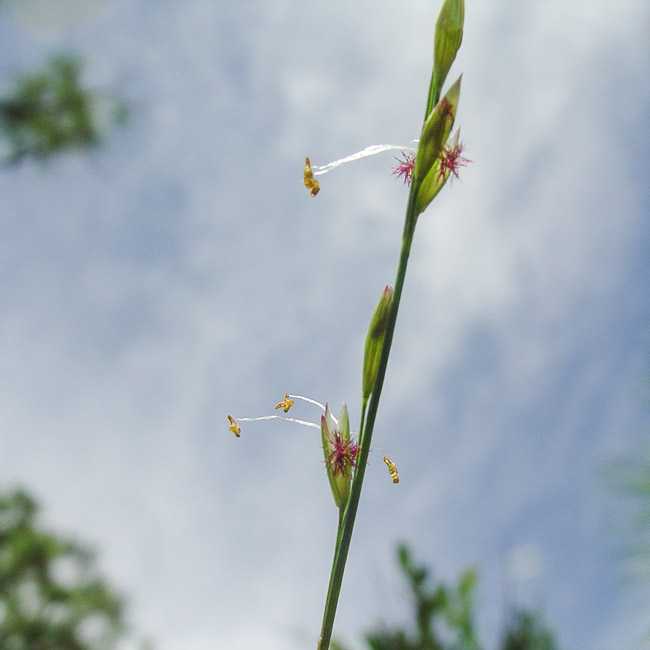
Conspicuous and convenient yellow stamens and purple stigmas on Amphicarpum
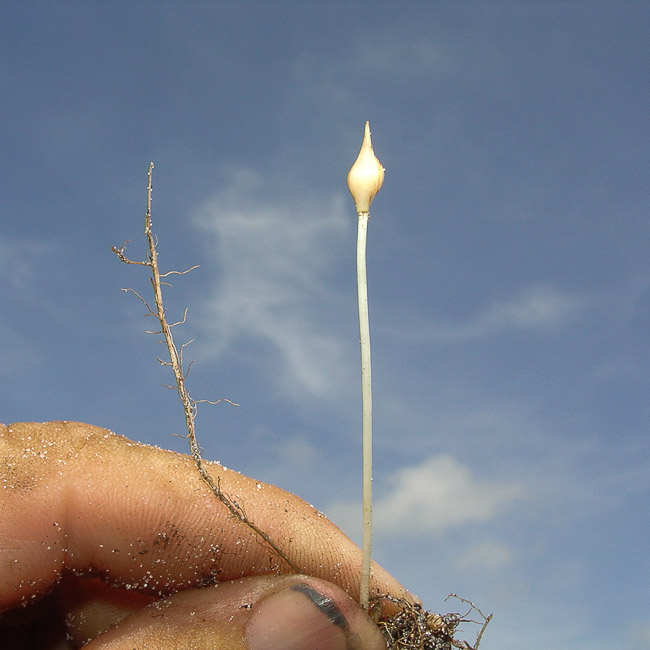
Amphicarpum underground cleistogamous spikelet. Photo taken in late July.
Self-Defense, Helpful Ants, and Awns
Grasses are the food plants of the world, so little wonder they have developed self-protective adaptations to discourage munching. Some adaptations are obvious, others merely speculative. Poisons are common in the plant world, including grasses. Some form cyanide; some have odors; and some have glands. It is impossible to be certain of the function of any gland but some probably make nectar that attracts ants. The ants help defend the plant against plant-eaters and pests. Eragrostis cilianensis has glands on its spikelet parts and on the leaf sheaths. Some grasses produce natural herbicides to suppress the growth of competing plants. This phenomenon is called allelopathy (ah-LEE-low-path-ee), and has commercial applications for natural herbicides such as corn gluten meal.
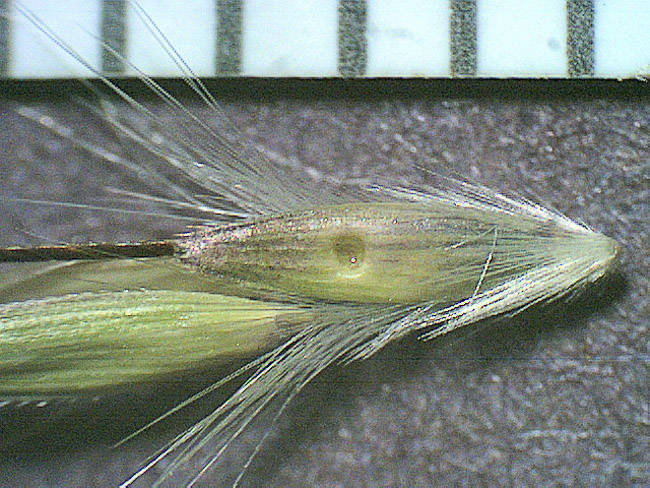
Large conspicuous gland on the spikelet of Bothriochloa pertusa. This gland probably makes ant food and ants then drag the spikelets around, dispersing them.
Awns and Bristles
Grasses have diverse "bristly" coverings and protrusions. Perhaps most familiar to any beach goer are the nasty "sand spurs" formed by Cenchrus. These burrs are spikelet clusters provided with wicked barbed spines. The spine impales your toe and your toe disperses the species. They also protect the fruit from predators as no right-minded creature would eat these seed coverings.
Many species, especially in the genera Pennisetum and Setaria, have long bristles radiating like a bottlebrush from their inflorescences. Maybe the bristles discourage herbivory and/or maybe they help in dispersal by catching wind, rain, or animals and shaking the "seeds" (grains) free.
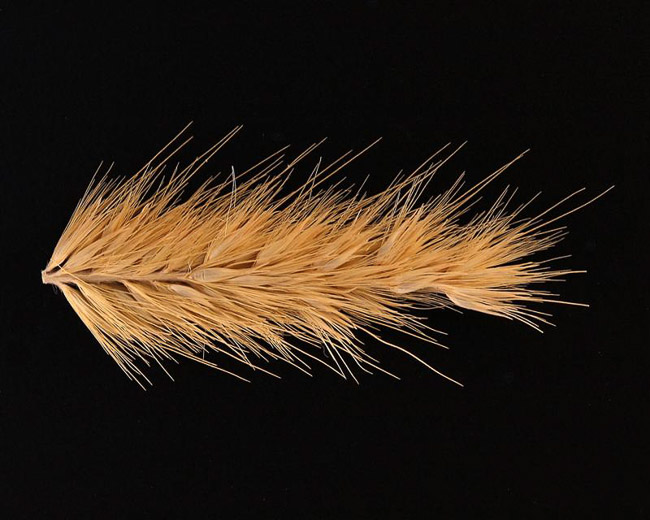
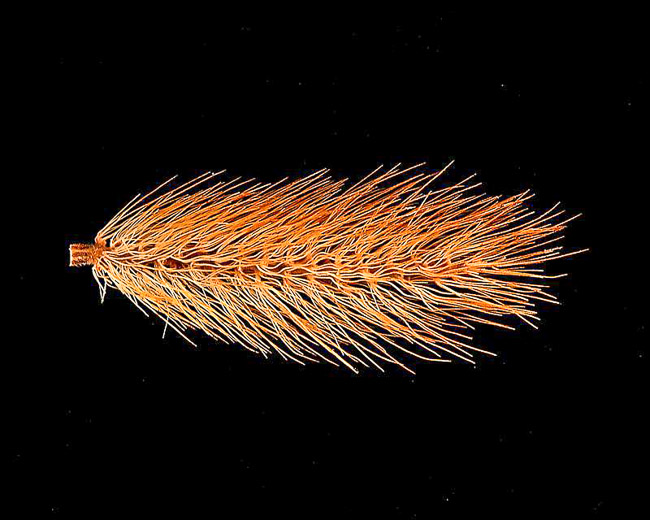
More diverse are awns. These are needles attached to the tips of glumes or lemmas (or occasionally to other structures). Awns range from microscopically small to multiple inches long. They are common in a large number of species. The functions are diverse. They help break the spikelet apart by catching wind, rain, or creatures. They can help orient, lodge or embed (plant) fallen spikelets. Some awns twist and move in responses to humidity changes, suggesting limited ability to "screw" into the sandy soil. Try putting water on a long awn.

A large awn limits the mobility of its spikelet, and very interestingly, the grass called "Tangleheads"(Heteropogon contortus) has the awns of each spikelet cluster all twisted together. Perhaps this is an adaptation to allow this grass to form dense stands.

Awns probably discourage herbivores. In some grasses, the awns which face the cow's mouth have a "nasty" look. Aristida spiciformis is a good example.

Parachutes
The plant world is full of seeds on parachutes, and grasses are no exception. Several species have fuzzy or cottony parachutes on their spikelets. Among others, this is true of the Andropogons, Saccharum giganteum, and Imperata.
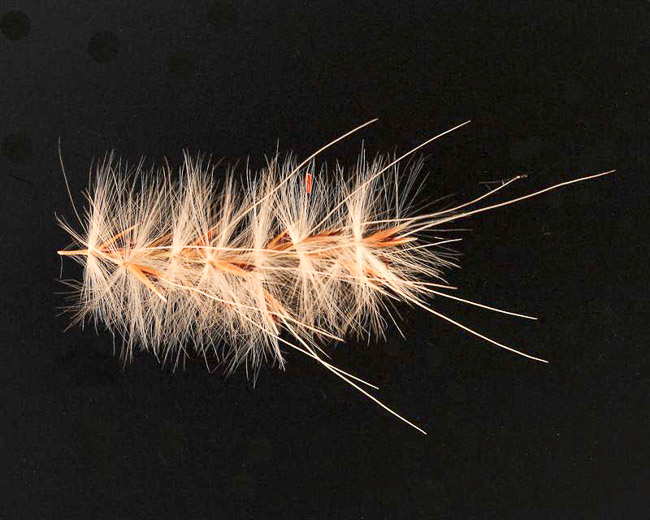
Floats
Some grasses disperse their fruit by flotation. The "pencil grasses" (Coelorachis, Hemarthria, Rottboellia, Tripsacum) have inflorescences that break into drum-shaped segments whose apparent job is to roll and float the fruit to their new home. The drum (largely the upper glume) acts like a protective cover.
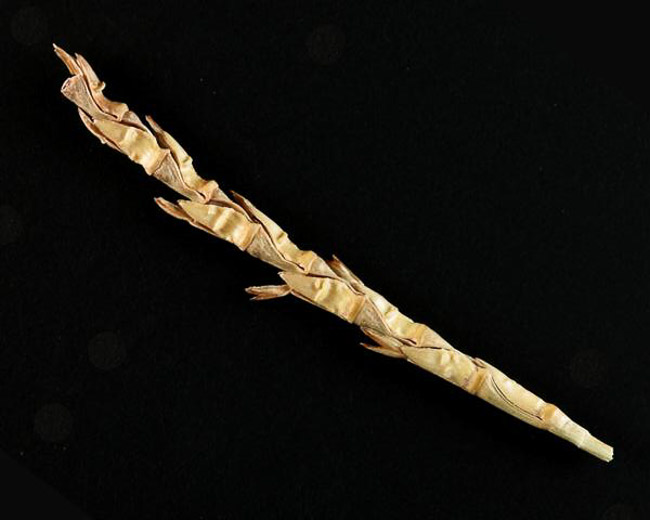

Changes in Leaf Blade Shape and Orientation
When grasses are thirsty, and anyone who collects herbarium specimens experiences this quickly, the blades tend to protect themselves by folding or curling inward along the edges. More interestingly, a few grasses have the ability to control the orientation of their leaves. Legumes and some other dicots have this ability conspicuously, with the movements controlled by an organ on the base of the petiole called a pulvinus. Similar mechanisms exist in grasses, the best local example being Guinea Grass, Urochloa maxima.
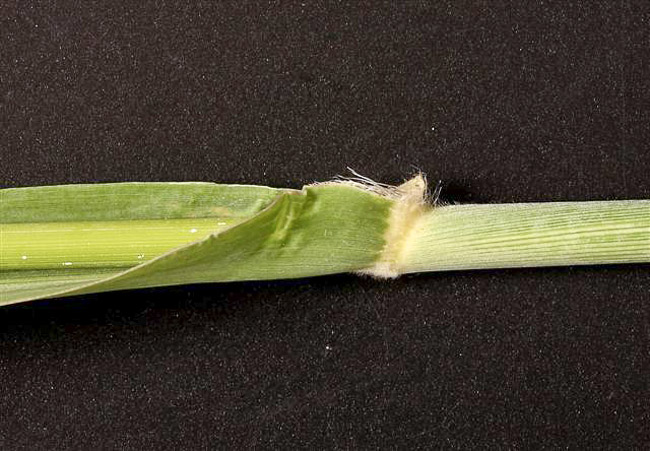
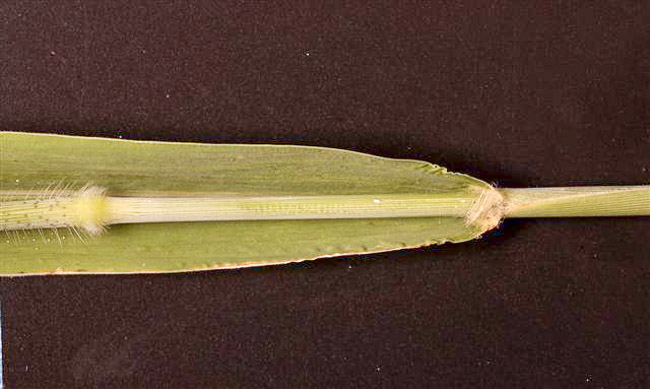
Nitrogen Fixation in Grasses
Did you ever wonder how a prairie flourishes without fertilizer? Legumes are the world’s famous nitrogen-fixing plants with the help of bacteria living in root nodules, but grasses have their own nitrogen-fixing microbial partners. (Nitrogen-fixing means transforming atmospheric nitrogen to ammonia, that is, to fertilizer.) Recent research is showing grasses to have symbiotic relationships with varied nitrogen-fixing bacteria, including the bacterial genus Azospirillum and others. There are cases of symbiotic bacteria living within grass root cells, as well as within the rhizome sheath and otherwise in close association with grass roots and rhizomes.